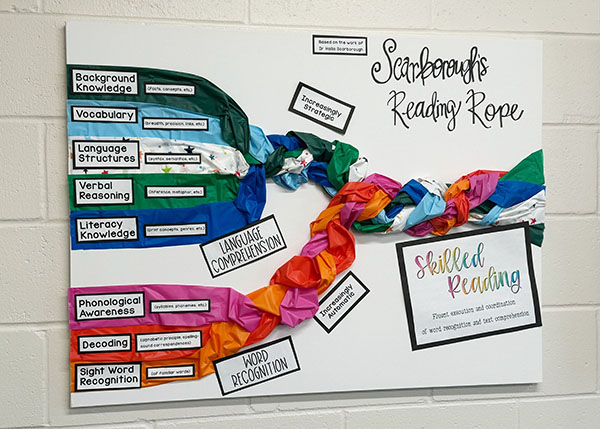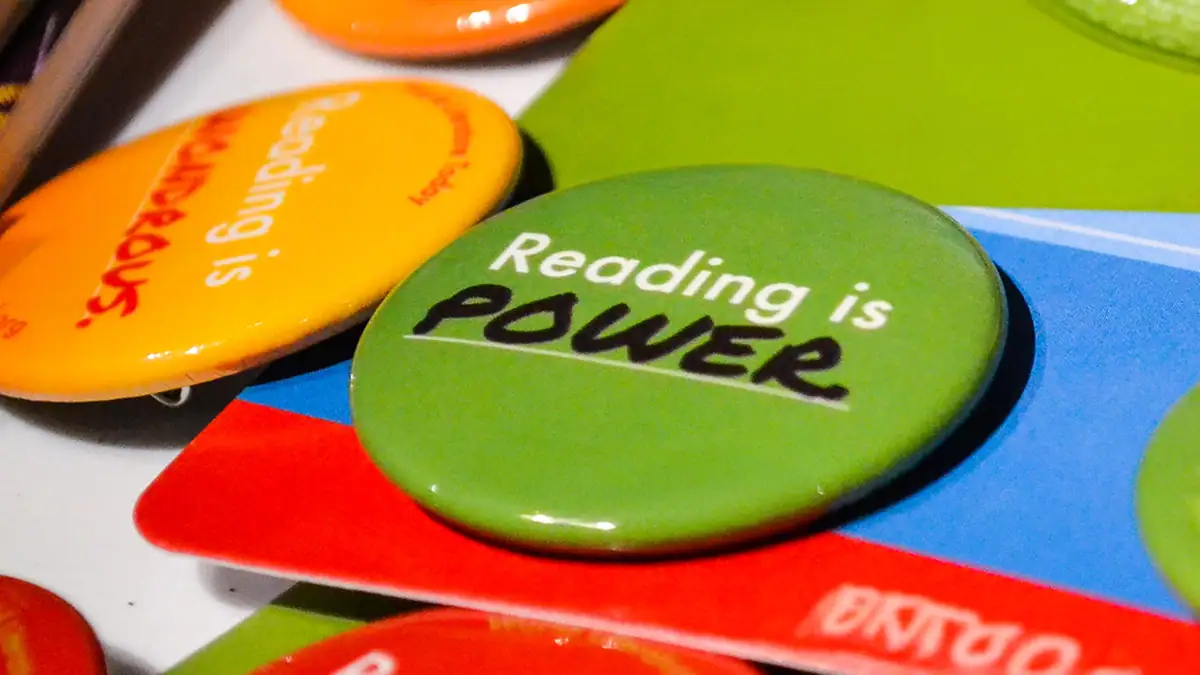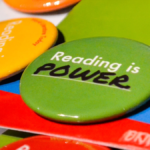When it comes to teaching kids to read, instruction that aligns to the Science of Reading is in; the balanced literacy approach is out.
This isn’t just our opinion — most states in the U.S. now have laws on the books or policies in their departments of education that require school districts to use Science of Reading-aligned curricula and assessment materials when teaching kids how to read. Some even outline that approved reading interventions — like high-dosage tutoring — must use high quality, science-based instructional methods.
At the same time, practices intrinsic to balanced literacy, such as teaching kids to rely on picture and context clues to identify words, have been outright banned in several states.
Why is this shift happening, and what is it that balanced literacy gets so wrong about teaching kids how to read? We’ll explore the origins of balanced literacy, why cognitive scientists say it doesn’t work, and share strategies districts and schools can use to make the switch to evidence-based reading instruction.
What Is Balanced Literacy? A Simple Definition
Balanced literacy is loosely defined as an approach to teaching reading that includes a mixture of explicit phonics instruction (which does align to the Science of Reading) and ineffective guessing strategies like three-cueing (which do not align to the science).
The term “balanced literacy” comes from the late Dr. Michael Pressley, an educational psychologist who served as director of the Literacy Achievement Research Center at Michigan State University.

Pressley first used the words “balanced literacy” in 1996 to describe the notion that the two most popular approaches to literacy instruction of the time could be merged together in the classroom. The words appeared in a book Pressley co-edited with Dr. Ellen McIntyre, a literacy professor in the Department of Teaching and Learning at the University of Louisville, called Balanced Instruction: Strategies and Skills in Whole Language.
At the time it was published, literacy educators typically subscribed to one of the two following methods for teaching kids to read:
- The Whole Language Approach — Advocates of the whole language approach believed that learning to read was a natural process similar to learning to speak and kids could be taught to read by focusing on the meaning and context of text, rather than on isolated skills like phonics. Students were immersed in rich text and taught to use strategies like the look-say method, which involved memorizing words and learning to recognize them based on their whole appearance.
- The Explicit Phonics Instruction Approach — This approach involved teaching kids the rules of phonics systematically and explicitly, starting with the most basic sounds and gradually moving to more complex ones. This same structured, step-by-step focus on building strong foundational reading skills through direct instruction is what science now tells us is the most effective way for kids to learn to read.
The two approaches were firmly at odds with one another, at least until balanced literacy arrived on the scene in the 1990s, pulling out bits of each to form a new way to teach kids to read.

The Popular Vote
In a 2019 survey, 68 percent of K-2 and special education teachers said they believed a balanced literacy approach was the best philosophy for teaching reading.
Balanced Literacy vs. Science of Reading
The Science of Reading is full of significant studies — among them landmark work by cognitive scientists Philip B. Gough and William Tunmer and Yale University’s Dr. Hollis Scarborough — that show mastery of both language comprehension and word recognition skills must happen for a child to learn to read fluently and with comprehension.
Reading researchers have found that the majority of students require explicit, systematic instruction in the alphabetic code (the system of letters and the sounds they represent, which helps readers understand how written words correspond to spoken language) in order to reach mastery. This instructional approach favored by the science is called structured literacy.

The Structured Literacy Approach vs. The Balanced Literacy Approach
The instructional approach proven most effective in building these skills to the point of proficiency has been dubbed structured literacy.
Structured literacy provides a blueprint for educators to ensure instruction aligns with the research on exactly what students need in order to learn to read.
Balanced literacy, well, doesn’t. Without guidelines in place to ensure students receive enough instruction in the alphabetic code, evidence-based practice is often shortchanged in favor of methods that do not align with the Science of Reading.
| Structured Literacy Approach | Balanced Literacy Approach |
|---|---|
| Systematic and cumulative instruction | Instruction varies |
| Includes phonics, spelling, and word recognition | Emphasizes meaning-making and context clues alongside phonics |
| Ensures students master the rules and patterns of the alphabetic code | Encourages students to use multiple cueing systems (visual, semantic, syntactic) |
| Explicit teaching of decoding skills | Implicit learning through exposure to literature |
Problematic Balanced Literacy Practices
Let’s examine some of the most common elements of the balanced literacy model … and why scientists say they do not work.
Leveled Readers
In balanced literacy, leveled readers are books that have an assigned letter to indicate their difficulty level. Those “levels” range from A to Z with A being most simple (kindergarten level) to Z being more complex text (syntactically and semantically) that 5th grade and above are expected to be able to access.
The leveled reader concept dates back to the 1940s when reading theorist and longtime Highlights for Children editor Emmet Betts proposed that students realize the largest growth as readers when they’re provided with reading materials that are on their “level.”

It took off in the 1990s thanks to the Fountas and Pinnell Classroom, a popular literacy system named for its creators, Irene Fountas and Gay Su Pinnell. Emphasizing a balanced literacy approach to instruction, the Fountas & Pinnell system includes not just a core curriculum but also intervention and assessment materials — none of which align with the Science of Reading. In other words, they don’t honor the research around how the brain learns to read.
A student’s reading level is assigned based on an assessment known as a running record, in which students read aloud and the teacher evaluates their accuracy, fluency, and ability to use context or picture clues to figure out unfamiliar words.
The results of these assessments are then used to match students with books that aren’t too difficult. These texts are often referred to as “just-right” books because they’re in the student’s zone of proximal development; like Goldilocks when she found that just right chair.
The level of these leveled readers is determined based on factors such as sentence length, vocabulary, picture support, and complexity of ideas, and students are assigned a “reading level,” which indicates the complexity of text they are able to read independently.
The driving theory behind leveled readers is that students can read these texts independently, and through reading, their reading proficiency will grow, allowing them to move on to higher “levels” of reading.
Why Leveled Readers Don’t Work
- Inaccurate Screening Techniques — Studies have found running records, the screeners used to determine a student’s reading level, are only 54 percent accurate in predicting student reading performance, and they fail to account for the wide variety of foundational reading skills gaps that might affect a student’s fluency.
- Lack of a Challenge — Leveled readers are widely criticized by researchers for not challenging students enough, stymying their reading growth. Reading levels in balanced literacy often keep students within their comfort zone, even if that means reading texts below their grade level.
Myriad studies have shown that use of “frustration level” texts – texts in which many of the words are new or unknown — are extremely effective at closing reading gaps, especially when coupled with intentional scaffolds like dyad reading (in which a more skilled reader and a developing reader read the same text aloud). - Hampered Knowledge Building — Leveling kids means they’re typically confined to one basket or shelf of books that are on their “level” in the classroom library. They aren’t allowed to select other books based on interest and excitement, which doesn’t align with how we choose books in the real world. As a result, they’re deprived of knowledge building opportunities and the chance to build a love for reading.
- Disconnection From Grade-Level Texts — Leveled readers often prevent students from ever engaging with grade-level complex text as they can remain stuck reading books that are on an “easier” level until given permission to progress to the next “level” or bucket of books (that may or may not interest and engage them). This causes a domino effect as it limits students’ exposure to the more advanced vocabulary, sentence structures, and ideas found in grade-level texts, which in turn limits their ability to build advanced reading and comprehension skills. Without exposure to more complex texts, they aren’t challenged to think critically, make inferences, or tackle more difficult language, all of which are essential for academic growth.
- Impeded Progress — Because they are dependent on the teacher to assess them again and move them to the next level, students can languish in a particular “level” in the time between assessments, unable or even afraid to access more complex text.
Guided Reading Groups
Leveled readers and their associated reading level assignments appear in another popular balanced literacy practice called guided reading which involves teachers working with a small group of students who have similar reading abilities and learning needs. Teachers instruct using a text that aligns with the students’ common assigned reading level and typically cover one or two discrete skills associated with that level (usually relating to comprehension — even if the underlying issue is decoding skills).
The concept originated in New Zealand where it was developed in the late 1960s by educator and author Dr. Marie Clay. Clay is best known for her work with the Reading Recovery© program which spread from New Zealand to many English-speaking countries, including the U.S., and was widely adopted in various forms.
Why Guided Reading Groups Don’t Work
Small group instruction is an evidence-based practice that can offer important differentiated instruction for learners. However, not all small group instruction formats are of equal value. Guided reading groups get a thumbs down from Science of Reading experts in part for the use of leveled readers, but that’s not all:
- Reading Gap Differences — With its focus on an individual book, “leveled” group instruction is too general and often doesn’t include the differentiated word work that students need most. The faulty running records used to determine a student’s reading level are also used to place them in guided reading groups. Because these screeners don’t account for specific skills gaps, students do not get the targeted support they need.
For example, one student may need to spend more time working with r-controlled vowels, while another student may need extra support to understand the rules for short vowel sounds vs long vowel sounds, but the instructor is using the guided reading group to talk about how to use pictures to make meaning or how to sequentially list the events that happened in the story. - Achievement Gaps — A large-scale study conducted by the Northwestern University Institute for Policy Research which tracked nearly 12,000 students from kindergarten through 3rd grade found that ability grouping students based on reading skills significantly widened achievement gaps. Students placed in lower reading groups progressed more slowly academically than their peers.
They were also slower to develop what the researchers dubbed important “learning behaviors,” such as varied interests, concentration on tasks, and persistence in the face of difficulty. This is particularly harmful when coupled with activities like leveling, which also restrict kids’ access and thus opportunities to build knowledge. - Stigma & Trauma — Because guided reading groups have been proven ineffective overall, they often add to the stigmas and stereotypes placed on the shoulders of students who need extra support with reading. Unable to access the structured literacy instruction that would help them learn, these students continue to struggle. In turn, this lack of progress can lead to unnecessary special education assignments for students and both deteriorating confidence and learning trauma for frustrated students.
Three-Cueing or MSV
One whole language approach practice that’s central to balanced literacy instruction is three-cueing or 3-cueing. It’s sometimes simply called cueing or MSV, which is short for Meaning, Syntax and Visual cues.
Built on a theory from Kenneth Goodman, an educator often called the father of whole language, 3-cueing involves teaching students to look to three sources of information — three cues — to decipher unknown words.
Goodman described those three sources as:
- Semantic cues that give meaning from context
- Syntactic cues that give meaning through letters
- Grapho-phonic cues that give meaning through spelling patterns
For example, an educator who employs the three-cueing strategy may tell a student to look at a picture and use the information found in that picture to guess what an unfamiliar word is. They may also encourage the child to read the other words in the sentence to fill in the blank, using prediction and semantic context to extract meaning.
Why Three-Cueing Doesn’t Work
Researchers have proven that taking students’ attention away from the letters in a word reduces the chance that they’ll use their knowledge of letter-sound correspondence when attempting to read. This reduces the chance that they’ll then map the spelling of the word to the spoken word in their memory banks, reducing their overall chances of becoming fluent readers.
The efficacy of three-cueing has been debunked time and again by scientific researchers, and using three-cueing to teach reading is now banned in at least 14 states.

What to Do in Place of Balanced Literacy
If your district is still following the balanced literacy model, the path forward starts with adopting a high quality evidence-based Tier 1 curriculum that includes systematic phonics instruction to teach students foundational reading skills like phonics that will build their word decoding skills. Implementing this curriculum and supporting teachers in teaching it with fidelity will open the door to precise diagnostics that tell you what and how to teach the individual students in your district.
Second to this, build an intentional support system for Tier 2 that will ensure every child has the targeted interventions they need to close reading gaps, including additional practice with phonics, fluency, and comprehension strategies, tailored to their specific skill levels.
Finally, partner with a high quality high-dosage tutoring program to provide a safety net for students who need more targeted support on top of your targeted interventions.
Looking for high-quality instructional materials that align with the Science of Reading? Try these resources:






